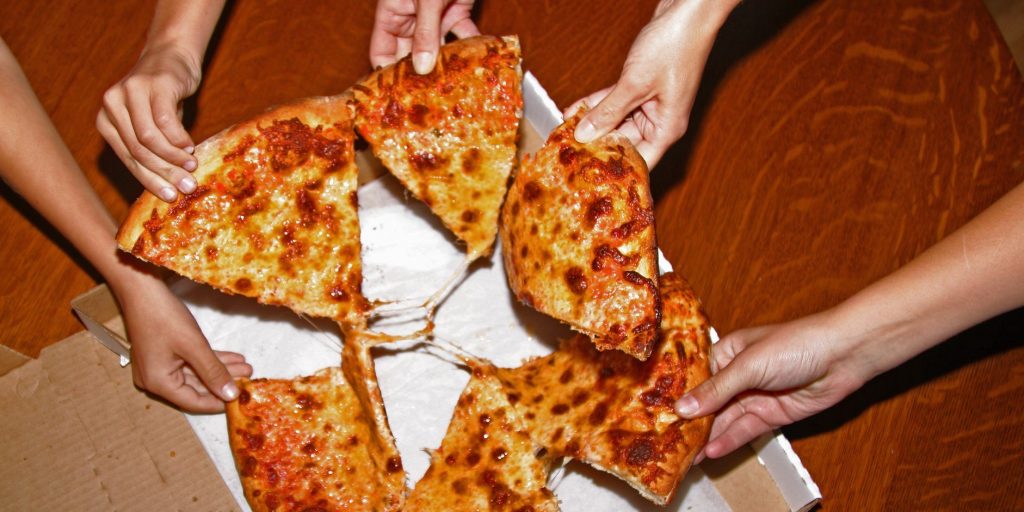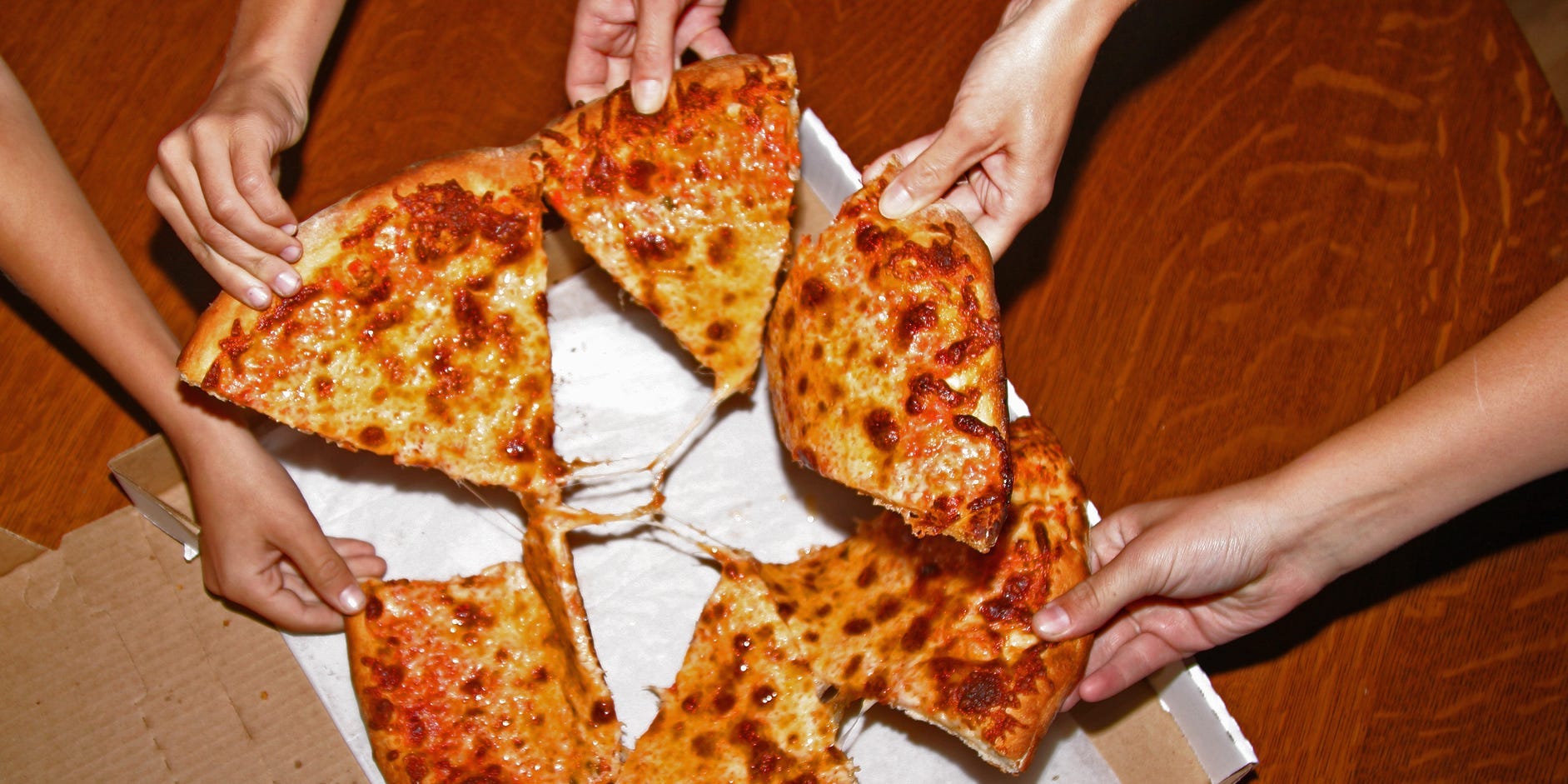
Eric Savage/Getty Images
- From fresh California-style pies to the slices of New York, you can find a variety of pizza styles across the US.
- Each type showcases how places can make unique and delicious offerings through different methods, ingredients, and resources availablle.
- Unconvential pizza-like creations worth seeking out include calzones, strombolis, and panzarottis.
- Visit Insider's Home & Kitchen Reference library for more stories.
Walk around any town in the US and you'll likely stumble upon at least one pizzeria. But the style of pizza could look very different depending on what region you're in.
Commonly viewed as a street food, pizza as its known in the US originated from a specific Neapolitan focaccia that came with Neapolitan-Italian immigrants who settled up and down the Northeast. But the ingredients and tools available for pizza-making in the US varied from those in Italy.
"It's a poor person's food, so you use whatever's available, which means that it changes all the time," says Scott Wiener, founder of Scott's Pizza Tours. In short? Pizza adapted itself to the regions they were made in. While the list below is far from complete, consider it a saucy start to some of the most premiere regional styles you can find the in the US.
Each type of pizza distinguishes itself by the crust – like the crispiness of a New York-style pie versus the thick and pillowy appearance of a Sicilian. But some will also incorporate certain toppings like California-style, or a certain cheese like St. Louis-style, to set themselves apart.
Neapolitan
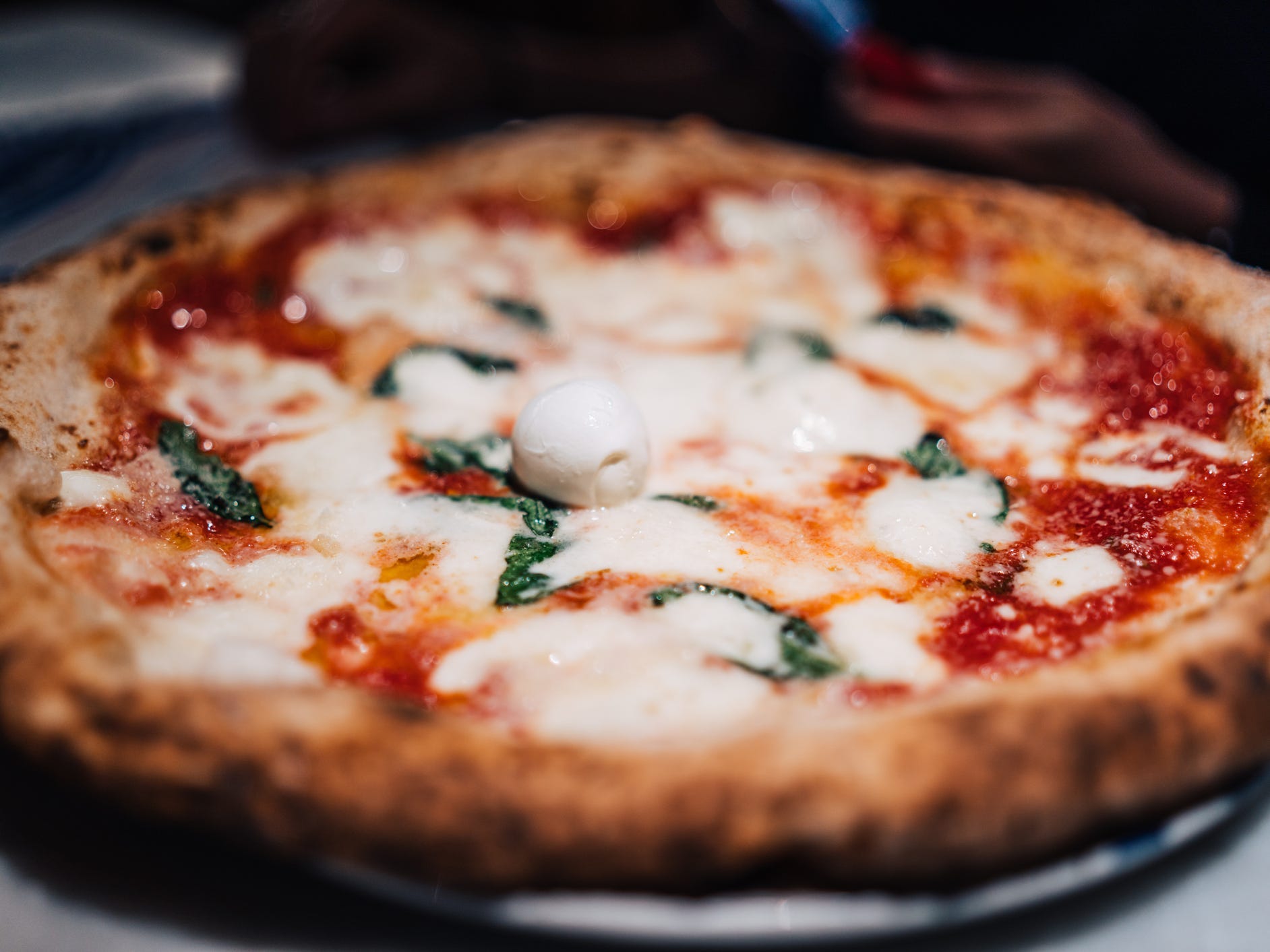
Francesco Riccardo Iacomino/Getty Images
Heralded by Wiener as the "origin of pizza," Neapolitan is "the simplest, lightest, and softest of all pizzas." It's baked in a wood-fired oven for about two minutes to create a supple pie that looks blistered along the crust. It gets sparsely topped with uncooked tomato and pockets of mozzarella.
New York-style
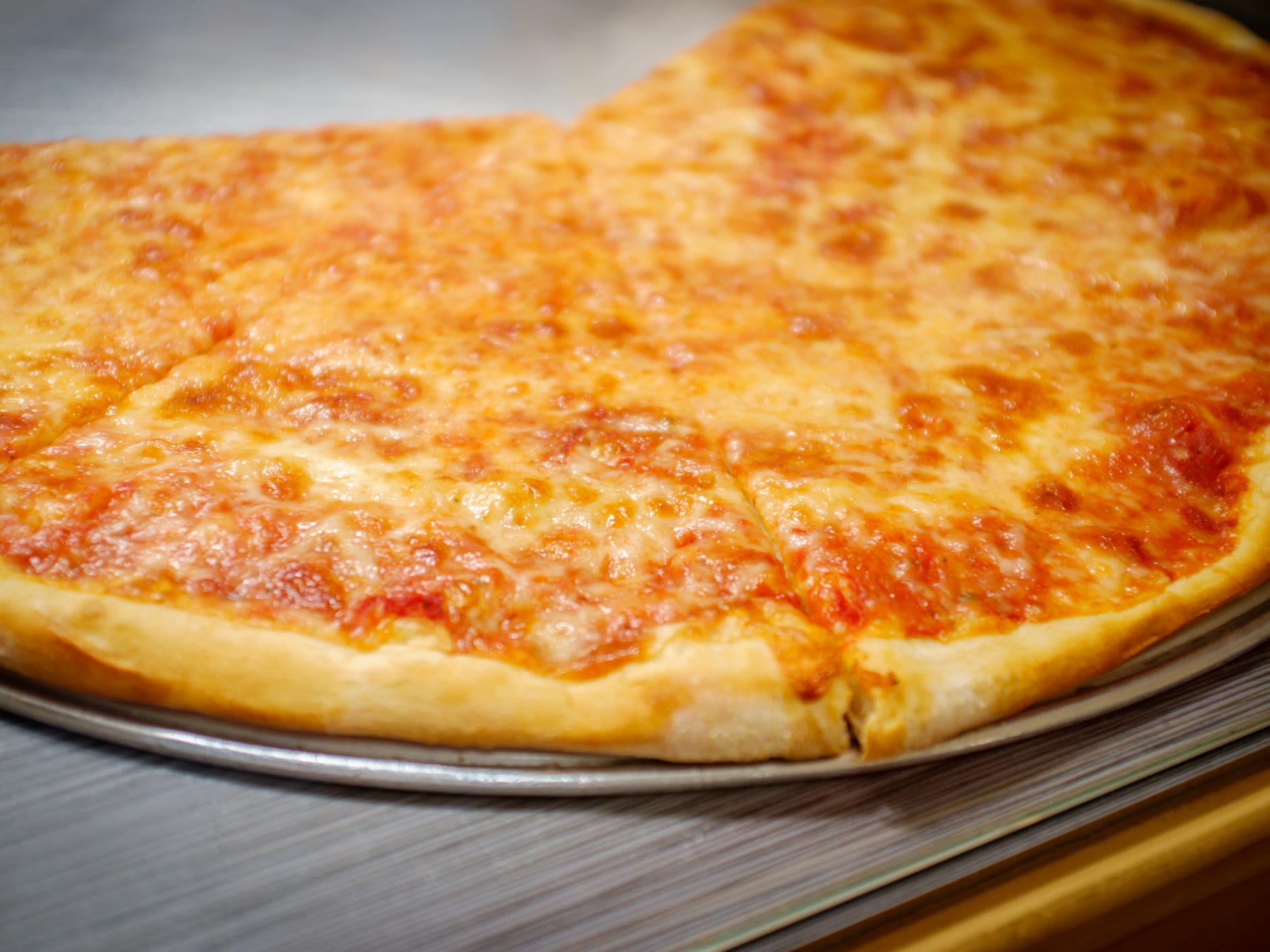
EzumeImages/Getty Images
"The creation of New York-style was really this necessary modification of Neapolitan pizza," says Wiener. "The fact that the flour in America was higher in protein made for a stretchier, larger, chewier pizza. The fact that our dairy product was more about cows than it was about buffalo like in Naples changed the cheese."
There are two versions of New York-style pizza, according to Wiener: the New York-style pizza and the New York slice. The New York-style pizza is the first iteration, and refers to a whole pie. Made using a brick oven fired by wood or gas, New York-style pizza features a drier texture than Neapolitan and showcases large swaths of char on the base of the pizza, along with unseasoned tomato (or lightly seasoned with some salt), and mozzarella.
The New York slice is what many are familiar with. Served by the slice, this is the midday (or midnight) snack taken from a 20-inch round pie that's baked in a deck oven, handed to us on a grease-stained paper plate, and folded in half to consume while on the go.
Sicilian
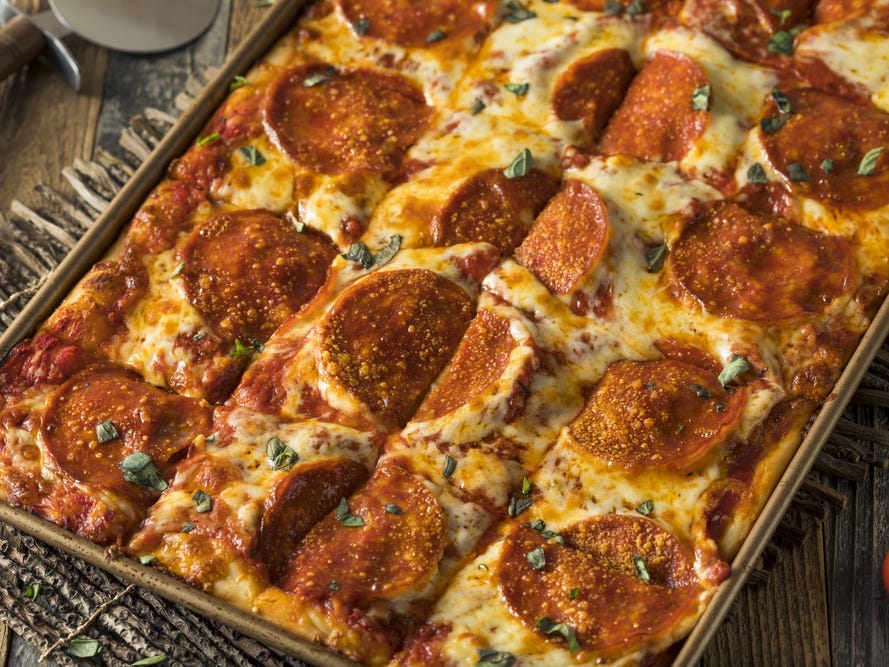
Brent Hofacker/Shutterstock
Sicilian pizza is a "relative" of the Sicilian sfincione - a focaccia topped with tomato, onion, garlic, anchovy, caciocavallo cheese, and breadcrumbs. But it got lumped in within the neighborhoods of Neapolitan pizzerias when it came to America because of its resemblance to pizza. Sicilian pizzas are made by stretching dough into a rectangular pan and allowing it to rise, or proof. It then gets topped and baked, resulting in a light and puffy bread-like pizza.
Grandma pizza
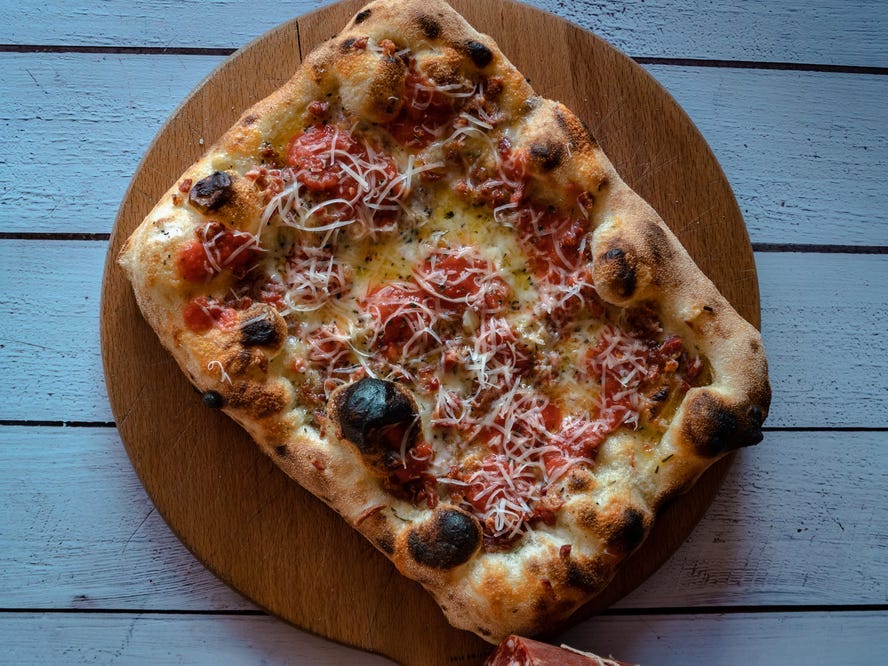
Mihailo Petrovic 993/Shutterstock
Grandma's pizza is a denser and thinner variation of Sicilian pizza. Named in honor of the Italian grandmothers who often made these pies at home with a sheet pan, the dough gets pushed into the pan, but, unlike Sicilian, it isn't allowed to rise. Instead it immediately gets topped with chunky tomato sauce and garlic before baking in the oven.
Detroit-style
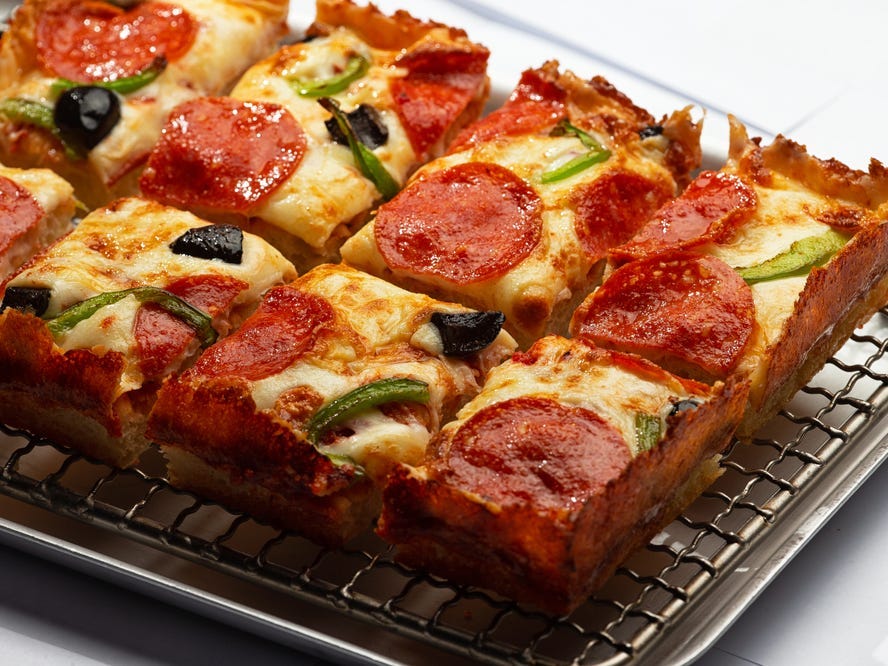
Palplaner/Shutterstock
Another subset of Sicilian pizza, Detroit-style was born in the ovens of the Detroit bar Buddy's in the mid 1940s, when the owner would make his mother-in-law's Sicilian pizza recipe in thick blue steel pans originally used by the auto industry to store and clean tools.
But these pans were taller than the average Sicilian pizza pan. And so when the dough - which is also made with more water - rises and bakes, it doesn't crest the top. This traps the fatty brick cheese specifically used for Detroit-style pizza, forcing it to the edges of the pie and resulting in the Detroit-style's signature twist. "A distinct characteristic of Detroit style is that the cheese burns on the edges. So when you take it out of the pan, there's that burnt caramelized cheese-edged crust," says Wiener.
New Haven-style
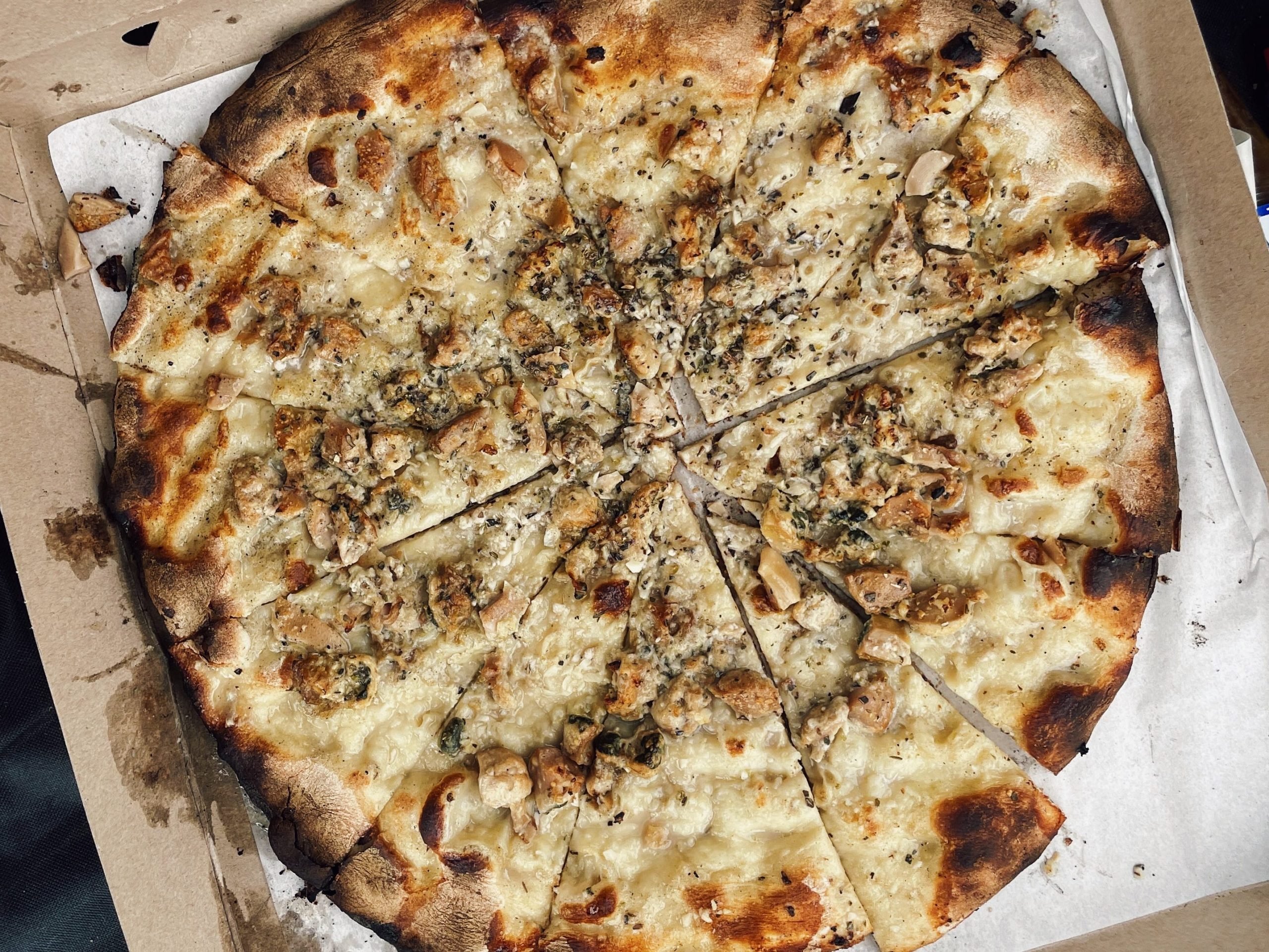
Insider
Originally made similarly to New York-style pizza in coal fired ovens, New Haven-style possesses a dense and crunchy crust topped with pecorino but no mozzarella. "If you were to order a regular pizza in New Haven, it doesn't come with mozzarella. You'd have to ask for pizza with mozzarella," says Wiener.
California-style

Wirestock Creators/Shutterstock
Whereas other pizzas differentiate themselves by their crust styles, California-style pizza does so through its toppings like avocados, artichoke hearts, or whatever other vegetable or garnish you might find at your typical West Coast farmers market.
As Wiener puts it, it's all about fresh produce and no rules. "With California, it's way more about keeping things local [with the produce]," Wiener says. "You put arugula on a New York slice, it just doesn't feel right. California? Bring on the arugula."
Chicago deep-dish
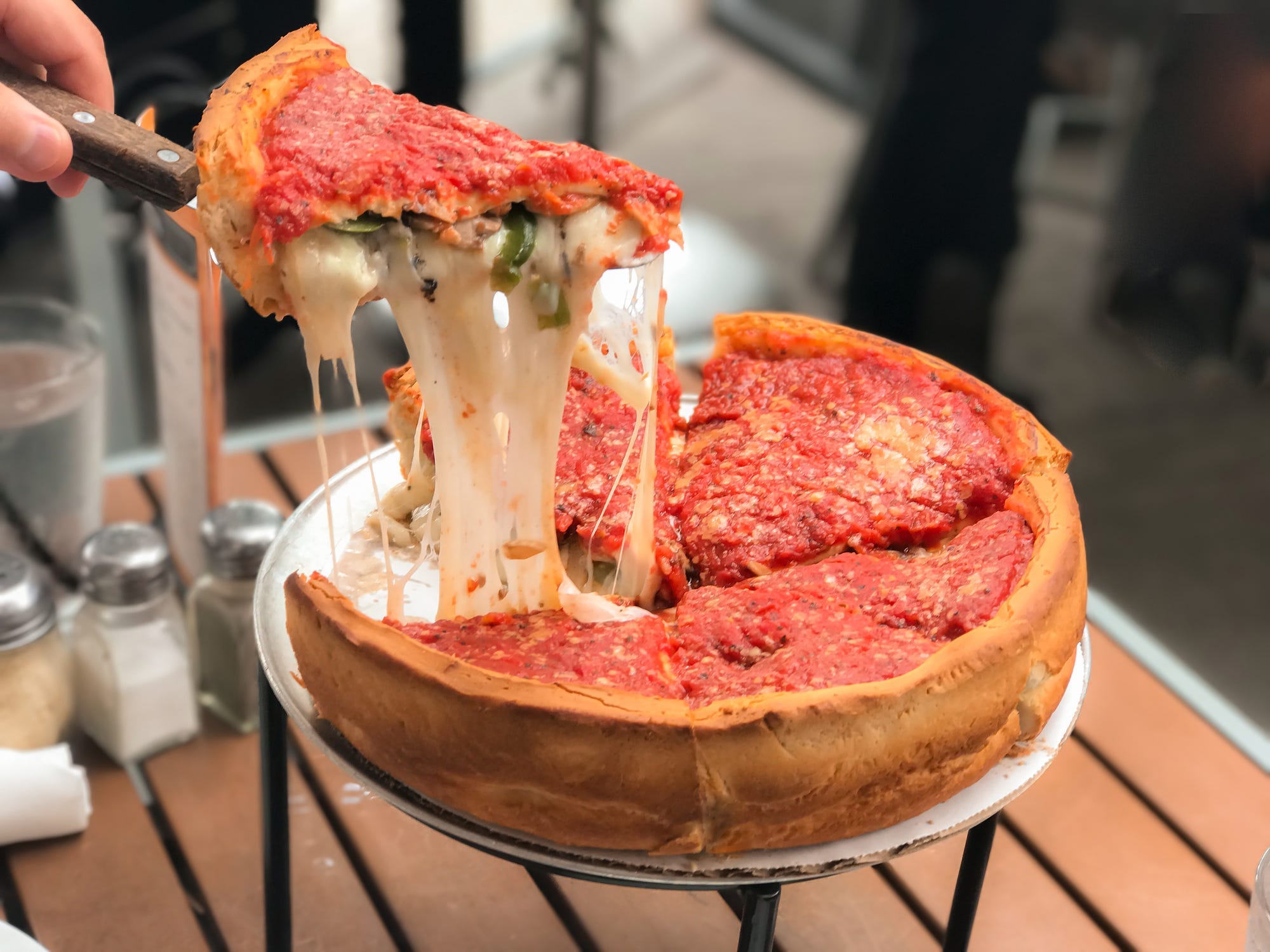
supitchamcsdam/Getty Images
Perhaps the furthest deviation from pizza's Italian origins, just looking at a deep-dish-style pizza - with its bright red sauce and molten cheese dripping over an immense bed toppings - might leave you simultaneously overwhelmed and eager to dig in. "Deep-dish pizza - you eat it when you're not planning on moving," says Wiener.
The sumptuously filling deep-dish-style was created sometime in the 1940s with the brutal Chicago winter in mind, like many of the other Midwestern styles of pizza. It's thick like Detroit-style or Sicilian, but the deep-dish pizza gets its depth from cheese and topping as opposed to crust. The dough is high in oil and low in protein, giving it a putty-like consistency that turns dense after baking and allows it to sustain the massive weight of tomato and other toppings nestled warmly within.
St. Louis-style
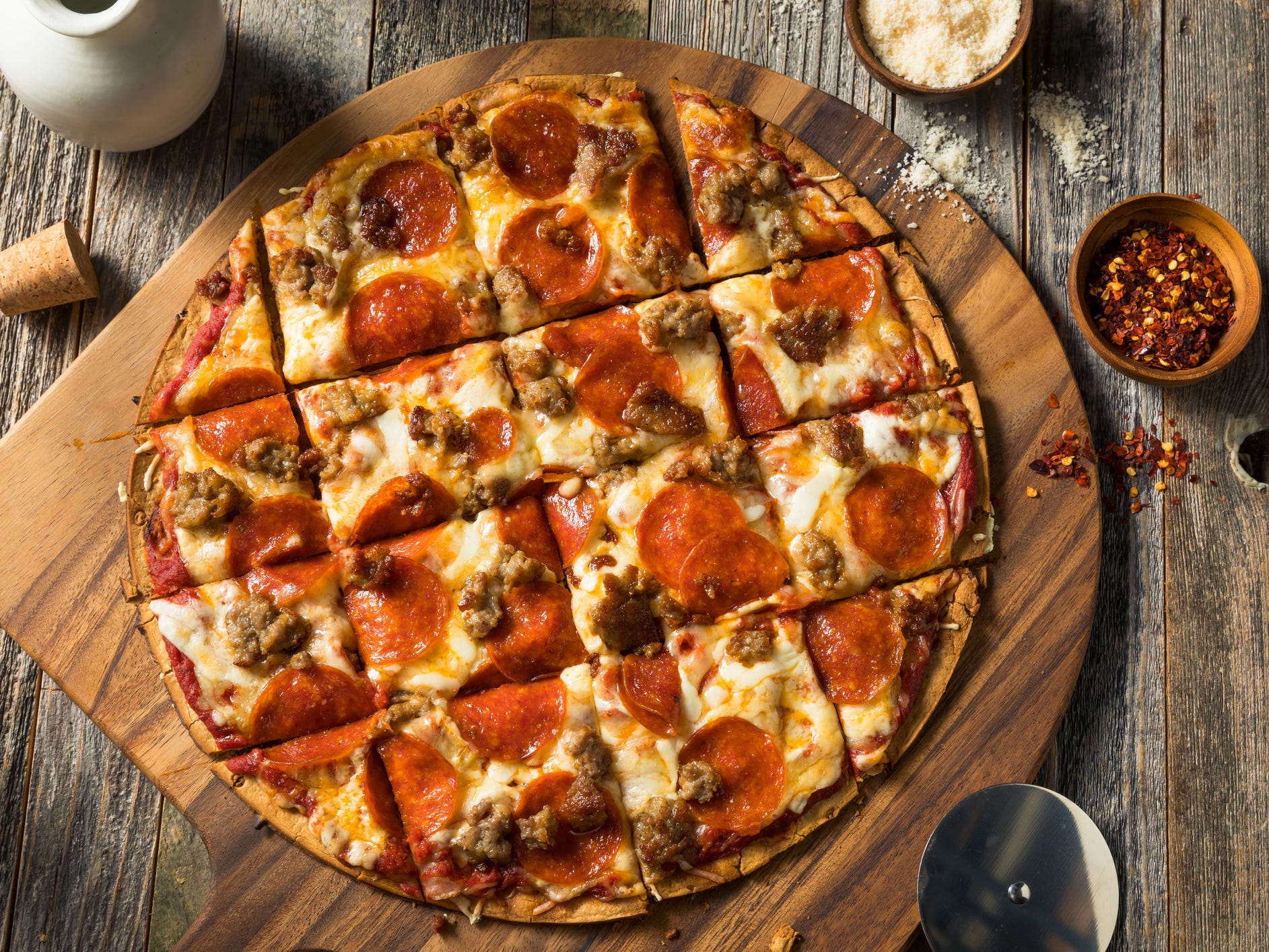
bhofack2/Getty Images
St. Louis-style pizza is a variation on Midwestern tavern-style pizza - thin crusted, round, and cut into squares allegedly to make for easier serving as a finger food.
Wiener theorizes the thin Midwest-style developed due to the availability of low protein flour in the region, which creates a thin crust that satisfyingly crunches when you bite into in. St. Louis-style pizza is almost exactly the same, except, instead of mozzarella, it uses a specific dairy product called Provel (a combination of provolone, cheddar, and swiss), which was common in the area in the 1970s when the style emerged at Imo's Pizzeria.
Roman-style
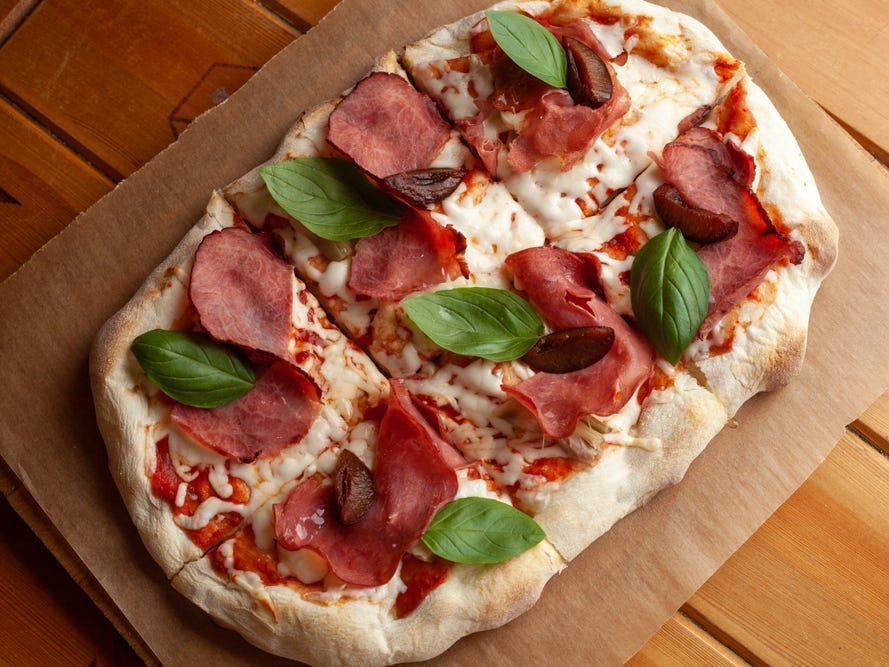
Alexey Andr Tkachenko/Shutterstock
"The exact history of it is kind of murky, but it seems to be more of a modern variation [of pizza]," says Wiener, who attributes Roman-style's origins in the '80s or '90s.
Otherwise known as "pizza al taglio," which means "by the cut," Roman pizza is a sliced pizza cut into squares. It's reminiscent of Sicilian, but even lighter and fluffier, and usually showcases decadent toppings. The style got popularized about a decade ago by Gabriele Bonci's Pizzarium in Italy, which was where they started using thicker dough with more water content that created a crust with a big and bubbly cross section. "It's a style a lot of people are getting into these days," Wiener says.
Unconventional pizza creations
While you can never go wrong with a pie, a few inverted and sauceless interpretations of pizza have also arisen over the years for us to chew on.
- Envision your pizza but rolled up and that's stromboli - dough is stretched and filled with cheese, meats, and other ingredients before baking.
- Where a stromboli is a rolled pizza, a calzone is a folded pizza. A calzone is made by stretching out the dough like pizza, putting cheese and toppings on half, and folding the other half closed over it, and then either frying or baking it.
- A pizza turnover of sorts, panzarottis are similar to calzones but folded over, fried, and sized for one person to walk and nibble on.
What pizza looks like around the world
Insider's takeaway
There's no set way to make pizza, which makes it a versatile and adaptable dish. Regional interpretations of pizza have always been informed by factors unique to the geography it's in, such as ingredient availability and even climate in some cases, leading to a wide variety of styles and kinds of pizza across the country and the globe.
